Abstract
The relation between ventricular function and electrocardiographic evidence of hypertrophy (by voltage criteria, "strain", and U wave inversion) was examined by means of M mode echocardiography and apex cardiography in 73 patients with diseases associated with left ventricular hypertrophy and 10 normal volunteers. In patients with disease, left ventricular cavity dimension and fractional shortening were unrelated to electrocardiographic findings, but left ventricular posterior wall thickness was greater in those with strain or U wave inversion. Without U wave inversion, hypertrophy and strain were weakly related to diastolic abnormalities, but the addition of U wave inversion was strongly associated with a reduced rate of early diastolic posterior wall thinning, prolonged isovolumic relaxation time, delayed mitral valve opening after minimum cavity dimension, and a pronounced increase in transverse dimension during the isovolumic period suggesting incoordinate relaxation. It is concluded that, whereas a negative U wave frequently occurs in association with the pattern of left ventricular hypertrophy or strain, it alone is strongly related to abnormalities of isovolumic relaxation. The close relation between incoordinate relaxation and U wave inversion, events which occur virtually simultaneously during the isovolumic period, suggests a mechanical influence on U wave genesis.
Full text
PDF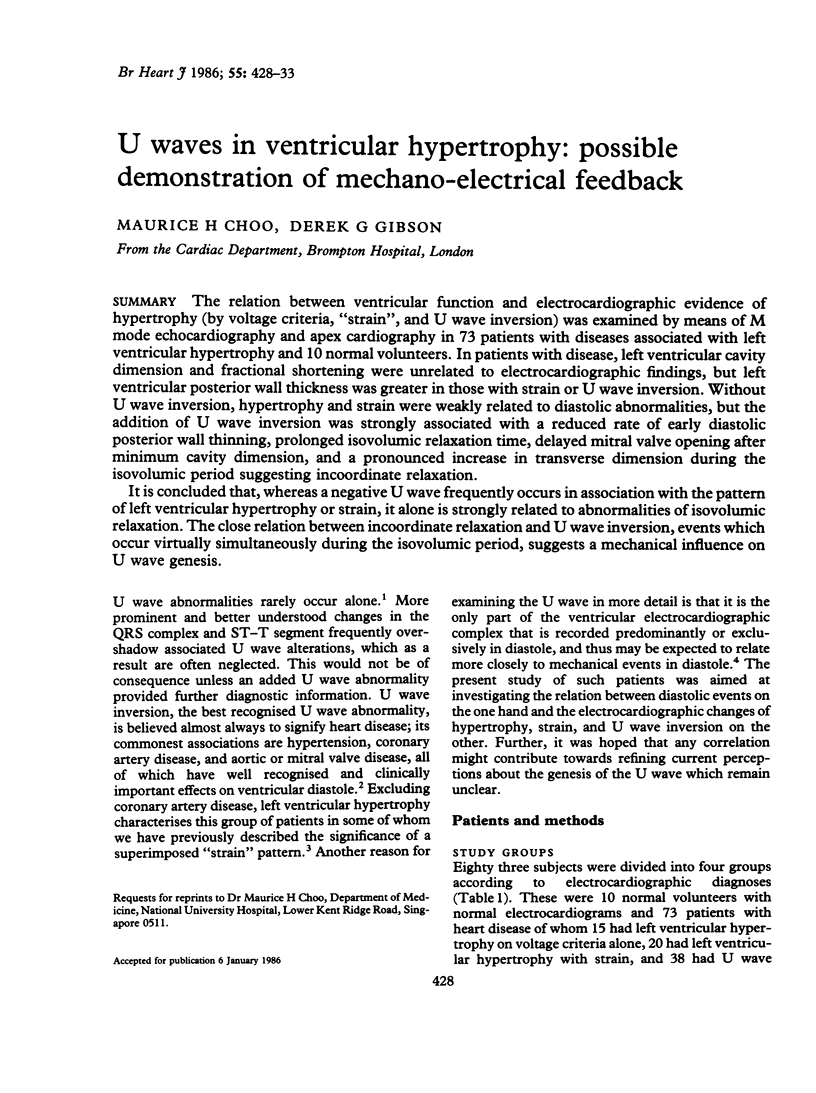
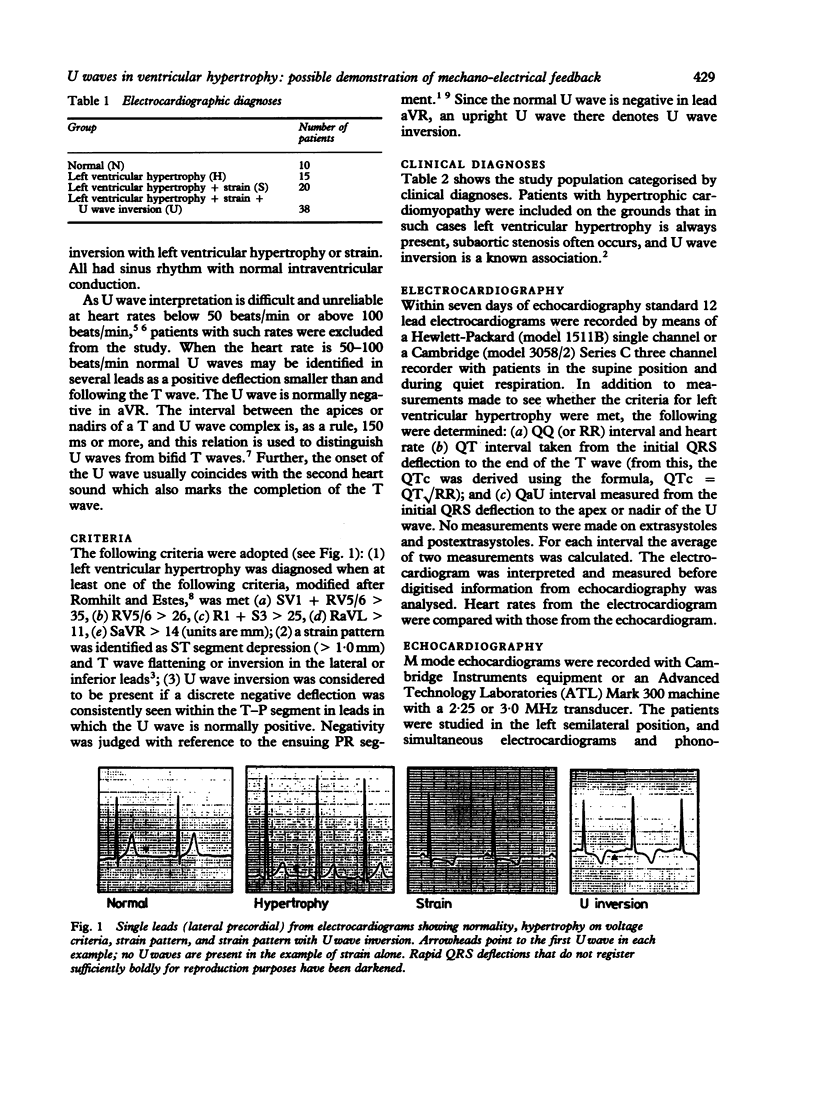
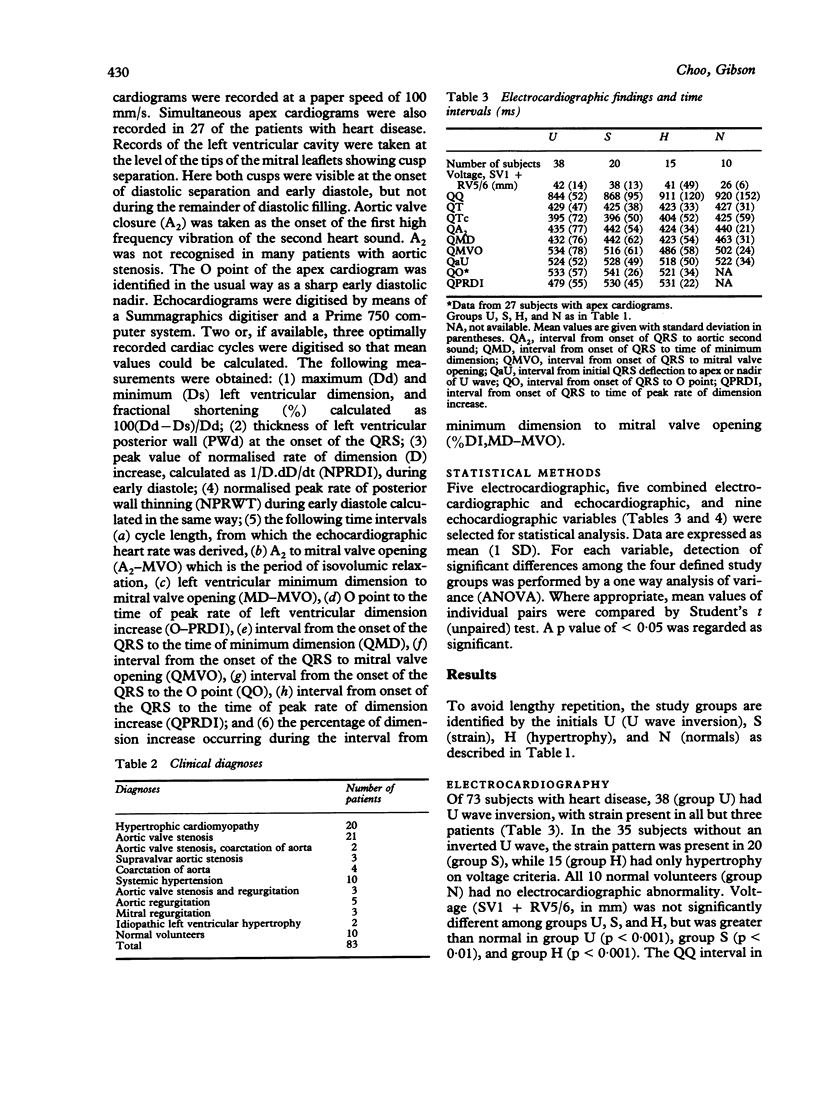
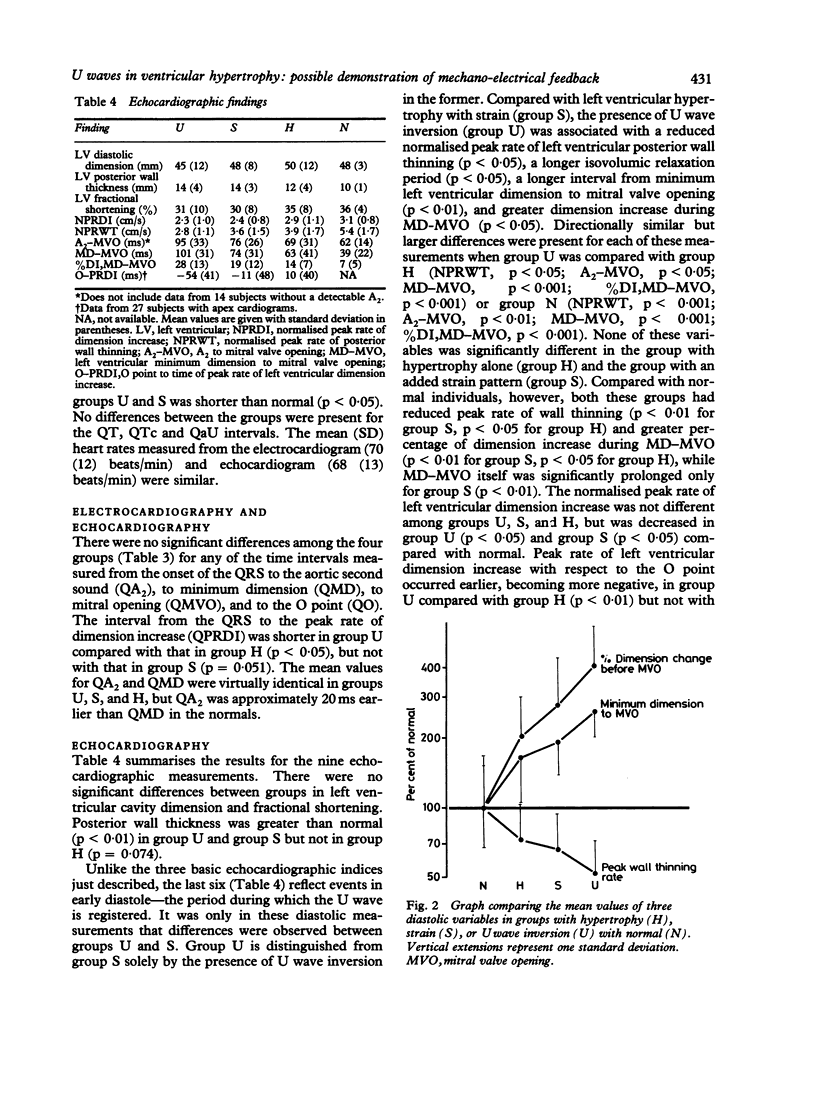
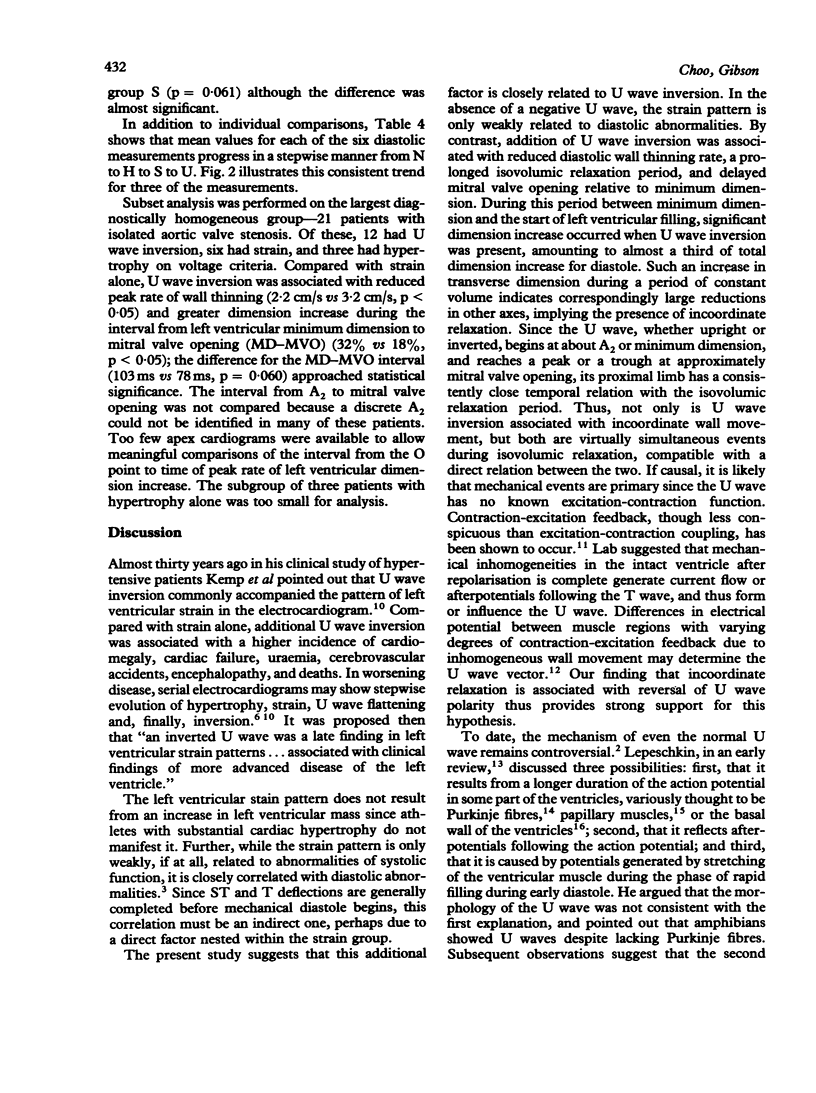
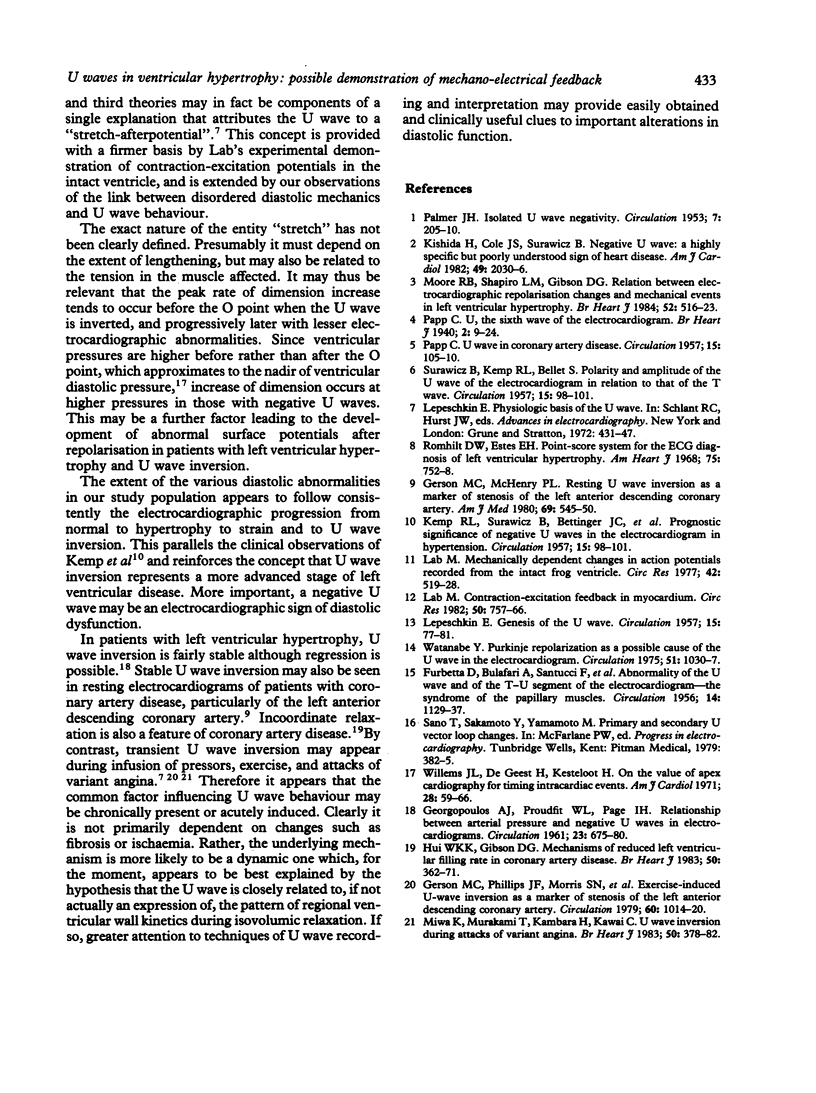
Selected References
These references are in PubMed. This may not be the complete list of references from this article.
- BELLET S., BETTINGER J. C., GOTTLIEB H., KEMP R. L., SURAWICZ B. Prognostic significance of negative U waves in the electrocardiogram in hypertension. Circulation. 1957 Jan;15(1):98–101. doi: 10.1161/01.cir.15.1.98. [DOI] [PubMed] [Google Scholar]
- BELLET S., BETTINGER J. C., GOTTLIEB H., KEMP R. L., SURAWICZ B. Prognostic significance of negative U waves in the electrocardiogram in hypertension. Circulation. 1957 Jan;15(1):98–101. doi: 10.1161/01.cir.15.1.98. [DOI] [PubMed] [Google Scholar]
- BUFALARI A., FURBETTA D., SANTUCCI F., SOLINAS P. Abnormality of the U wave and of the T-U segment of the electrocardiogram; the syndrome of the papillary muscles. Circulation. 1956 Dec;14(6):1129–1137. doi: 10.1161/01.cir.14.6.1129. [DOI] [PubMed] [Google Scholar]
- GEORGOPOULOS A. J., PROUDFIT W. L., PAGE I. H. Relationship between arterial pressure and negative U waves in electrocardiograms. Circulation. 1961 May;23:675–680. doi: 10.1161/01.cir.23.5.675. [DOI] [PubMed] [Google Scholar]
- Gerson M. C., McHenry P. L. Resting U wave inversion as a marker of stenosis of the left anterior descending coronary artery. Am J Med. 1980 Oct;69(4):545–550. doi: 10.1016/0002-9343(80)90465-9. [DOI] [PubMed] [Google Scholar]
- Gerson M. C., Phillips J. F., Morris S. N., McHenry P. L. Exercise-induced U-wave inversion as a marker of stenosis of the left anterior descending coronary artery. Circulation. 1979 Nov;60(5):1014–1020. doi: 10.1161/01.cir.60.5.1014. [DOI] [PubMed] [Google Scholar]
- Hui W. K., Gibson D. G. Mechanisms of reduced left ventricular filling rate in coronary artery disease. Br Heart J. 1983 Oct;50(4):362–371. doi: 10.1136/hrt.50.4.362. [DOI] [PMC free article] [PubMed] [Google Scholar]
- Kishida H., Cole J. S., Surawicz B. Negative U wave: a highly specific but poorly understood sign of heart disease. Am J Cardiol. 1982 Jun;49(8):2030–2036. doi: 10.1016/0002-9149(82)90225-9. [DOI] [PubMed] [Google Scholar]
- LEPESCHKIN E. Genesis of the U wave. Circulation. 1957 Jan;15(1):77–81. doi: 10.1161/01.cir.15.1.77. [DOI] [PubMed] [Google Scholar]
- Lab M. J. Contraction-excitation feedback in myocardium. Physiological basis and clinical relevance. Circ Res. 1982 Jun;50(6):757–766. doi: 10.1161/01.res.50.6.757. [DOI] [PubMed] [Google Scholar]
- Lab M. J. Mechanically dependent changes in action potentials recorded from the intact frog ventricle. Circ Res. 1978 Apr;42(4):519–528. doi: 10.1161/01.res.42.4.519. [DOI] [PubMed] [Google Scholar]
- Miwa K., Murakami T., Kambara H., Kawai C. U wave inversion during attacks of variant angina. Br Heart J. 1983 Oct;50(4):378–382. doi: 10.1136/hrt.50.4.378. [DOI] [PMC free article] [PubMed] [Google Scholar]
- Moore R. B., Shapiro L. M., Gibson D. G. Relation between electrocardiographic repolarisation changes and mechanical events in left ventricular hypertrophy. Br Heart J. 1984 Nov;52(5):516–523. doi: 10.1136/hrt.52.5.516. [DOI] [PMC free article] [PubMed] [Google Scholar]
- PALMER J. H. Isolated U wave negativity. Circulation. 1953 Feb;7(2):205–210. doi: 10.1161/01.cir.7.2.205. [DOI] [PubMed] [Google Scholar]
- PAPP C. U wave in coronary disease. Circulation. 1957 Jan;15(1):105–110. doi: 10.1161/01.cir.15.1.105. [DOI] [PubMed] [Google Scholar]
- Papp C. U, THE SIXTH WAVE OF THE ELECTROCARDIOGRAM. Br Heart J. 1940 Jan;2(1):9–24. doi: 10.1136/hrt.2.1.9. [DOI] [PMC free article] [PubMed] [Google Scholar]
- Romhilt D. W., Estes E. H., Jr A point-score system for the ECG diagnosis of left ventricular hypertrophy. Am Heart J. 1968 Jun;75(6):752–758. doi: 10.1016/0002-8703(68)90035-5. [DOI] [PubMed] [Google Scholar]
- Watanabe Y. Purkinje repolarization as a possible cause of the U wave in the electrocardiogram. Circulation. 1975 Jun;51(6):1030–1037. doi: 10.1161/01.cir.51.6.1030. [DOI] [PubMed] [Google Scholar]
- Willems J. L., De Geest H., Kesteloot H. On the value of apex cardiography for timing intracardiac events. Am J Cardiol. 1971 Jul;28(1):59–66. doi: 10.1016/0002-9149(71)90035-x. [DOI] [PubMed] [Google Scholar]


